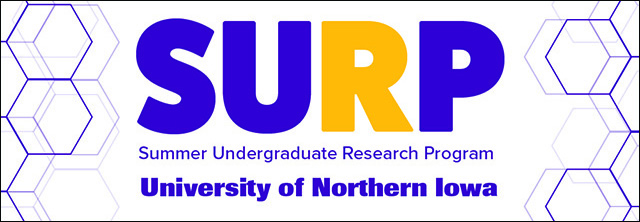
2022 Summer Undergraduate Research Program (SURP) Symposium
Location
ScholarSpace, Rod Library, University of Northern Iowa
Presentation Type
Open Access Poster Presentation
Document Type
poster
Keywords
Metric spaces;
Abstract
The concept of a rendezvous number was originally developed by O. Gross in 1964, and was expanded upon greatly by J. Cleary, S. Morris, and D. Yost in 1986. This number exists for every metric space, yet very little is known about it, and it’s exact value for most spaces is not known. Furthermore, it’s exact value is difficult to calculate, and in most cases we can only find bounds for the value. We focused on their arguments using convexity and applied it to shapes in different metrics and graphs. Using sets of points that stood out (vertices, midpoints) as well as computer analysis, we attempted to find rendezvous numbers for certain geometric shapes and classes of graphs, all of which had been previously unknown.
Start Date
29-7-2022 11:00 AM
End Date
29-7-2022 1:30 PM
Event Host
Summer Undergraduate Research Program, University of Northern Iowa
Faculty Advisor
Bill Wood
Department
Department of Mathematics
Copyright
©2022 Kevin Demler and Dr. Bill Wood
File Format
application/pdf
Recommended Citation
Demler, Kevin and Wood, Bill Ph.D., "Rendezvous Numbers of Compact and Connected Spaces" (2022). Summer Undergraduate Research Program (SURP) Symposium. 27.
https://scholarworks.uni.edu/surp/2022/all/27
Rendezvous Numbers of Compact and Connected Spaces
ScholarSpace, Rod Library, University of Northern Iowa
The concept of a rendezvous number was originally developed by O. Gross in 1964, and was expanded upon greatly by J. Cleary, S. Morris, and D. Yost in 1986. This number exists for every metric space, yet very little is known about it, and it’s exact value for most spaces is not known. Furthermore, it’s exact value is difficult to calculate, and in most cases we can only find bounds for the value. We focused on their arguments using convexity and applied it to shapes in different metrics and graphs. Using sets of points that stood out (vertices, midpoints) as well as computer analysis, we attempted to find rendezvous numbers for certain geometric shapes and classes of graphs, all of which had been previously unknown.



